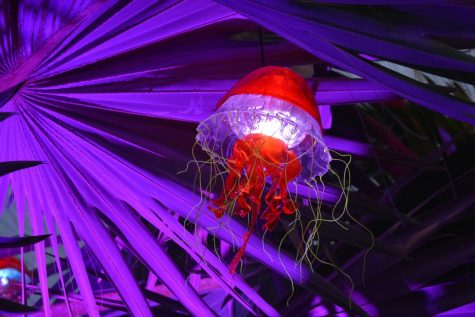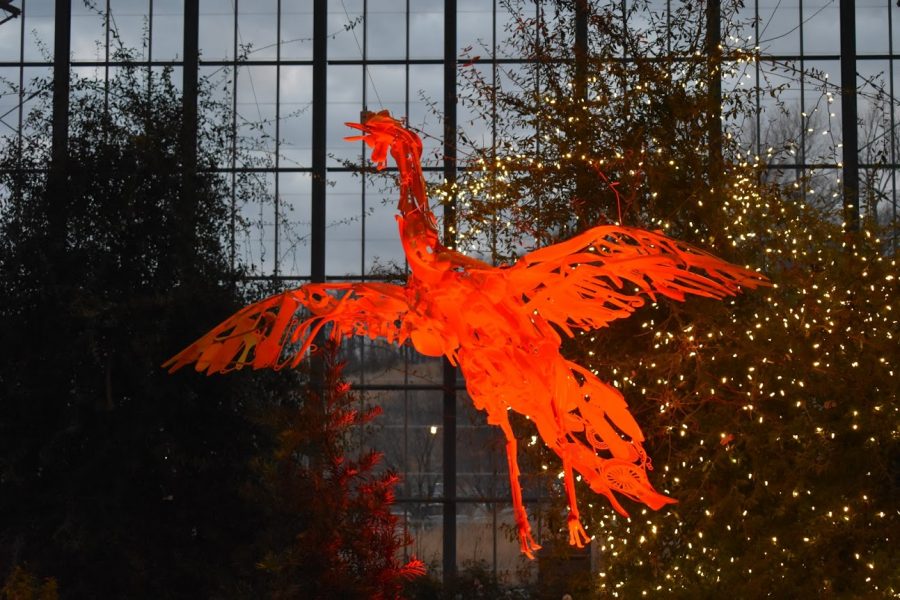Trash to Treasure
Lauritzen Gardens showcases works of recycled art
March 9, 2018
It’s inescapable. It’s versatile. It’s plastic.
Ever since plastic was created in the early 19th century, it has been embedded in American culture. Although plastic is here to stay, places such as Lauritzen Gardens are raising awareness about plastic pollution through art.
Global production of plastic increased from two million tons in 1950 to 380 million tons by 2015, a growth rate 2.5 greater than that of the global economy, according to Dr. Roland Geyer from the National Center for Ecological Analysis and Synthesis at the University of California, Santa Barbara.
The growing production of plastic has made recycling a more common practice opposed to decades ago. Many people were unaware of the effects of plastic, but media has opened their eyes to the extent its harm. Pictures of massive landfills littered with plastic bottles and polluted oceans trapping sea animals causes society to be confronted with the problem; plastic isn’t going anywhere. Every year pollution causes harm to millions of humans and wildlife; Artists Aurora Robson and Sayaka Ganz take this issue to heart and raise awareness through their artwork.
Lauritzen Gardens hosts Robson and Ganz’s art in the “Metamorphosis”display. They used reclaimed plastic and other discarded materials to sculpt creatures from all ecosystems to change the way people see the environment in a positive way. These sculptures range anywhere from small jellyfish made of salad bowls to giant birds made of combs lurking over the Marjorie K. Daugherty conservatory. Robson and Ganz’s works feature objects anywhere from coat hangers to bubble wands.
Robson is a multimedia artist known for her transformative work inspired by nature. Robson’s work has been featured in National Geographic, Art In America and Sculpture Magazine. She is the founder of Project Vortex, a non-profit international collective of artists, designers and architects actively working with plastic. They strive to inspire others to reinvent plastic waste in innovative ways through art and education.
Robson said to Omaha World Herald, “It’s intended to be a gentle awakening, in a way, to help raise awareness about plastic pollution and how we can be better stewards of the environment.”
Alongside Robson is Ganz, a Japanese artist who uses a plethora of discarded material to draw attention to the world’s ecological footprint. Ganz has been heavily involved in Project Vortex as well as many other environmentally based exhibits. She has always had a deep connection with nature and uses that to breathe life back into discarded materials.
“I do not want to condemn the use of plastic or our desire for a more convenient, easier life. However, we must be aware that convenience has hidden costs.” Ganz said in her personal statement.
The “Metamorphosis” exhibit is available to view from 9 a.m. to 5 p.m. daily until May 13, 2018. When the sun goes down, the lights come on; from January 20to March 4, 2018 the exhibit is illuminated until 8 p.m. Admission to Lauritzen Gardens is $10 for adults, $5 for children six through 12, and free for kids under the age of six.









